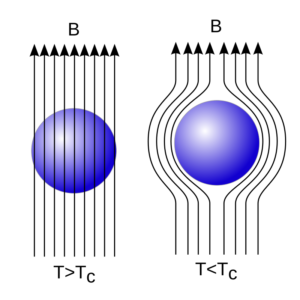Fermi Dirac Statistics
- It is applied to Fermions or Fermi particles, i.e. indistinguishable particle with half integral spin.
- Particles are indistinguishable from each other.
- Each cell or sublevel may contain 0 or 1 particle i.e., gi, >> ni
- Total number of particles of system remain constant, n = Σni = constant
- Sum of energies of all the particles in the different groups taken together i.e., total energy of the system remain constant E = Σniεi = constant
- Consider a system of n independent identical particles having half integral spin.
- These particles be divided into quantum groups or levels such that
- Energy levels ε1, ε2, ε3, …εi
- Degeneracies g1, g2, g3, …gi
- Occupation number n1, n2, n3, …ni
- Now, we consider a box, divide it into gi sections, distribute ni particles among them.

- Number of ways to put first particle in any one of the iih level = gi
- Number of ways to put second particle in the remaining (gi – 1) state = (gi – 1)
… … … … … …
- Total number of ways to distribute ni particles in gi states = gi (gi – 1) (gi – 2) … (gi – ni + 1)
- Since the particles are indistinguishable from each other.
- Therefore the number of ways
- Total number of eigen state for the whole system
- According to the postulates of a priori probability of eigen state
- Sterling approximation log x! = x log x – x
- For maximum probability, δ log ω = 0
- Other condition
n = Σ ni = constant
or δn = Σ δni = 0 …(2)
and E = Σ ni εi = constant
or δE = Σ εiδni = 0 …(3)
- Lagrange’s method of undetermined multiplier, (1) + (2) × α + (3) × β
Σ [log {ni /(gi − ni)} + α + βεi ] δni = 0
- But δni is arbitrary
∴ log {ni /( gi −ni )} + α + βεi = 0
or log {(gi / ni ) − 1 } = α + βεi
or (gi / ni ) − 1 = exp (α + βεi )
or (gi / ni ) = exp (α + βεi ) + 1
or ni = gi / [exp (α + βεi ) + 1]
To know about Fermi Dirac statistics in detail please click here


